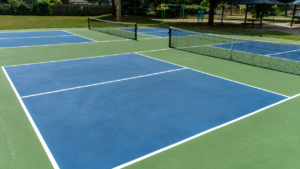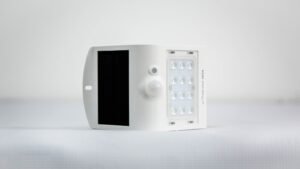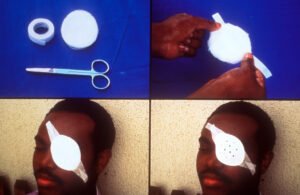Imagine stepping onto the pickleball court, paddle in hand, ready to deliver a serve that leaves your opponent spinning. The spin serve can be that secret weapon—adding unpredictability, control, and sometimes, controversy. But what exactly makes a spin serve legal or illegal in pickleball? Let’s dive into this dynamic serve, exploring what’s allowed, what’s not, and how to use it effectively to level up your game.
Table of Contents

Unveiling the Spin Serve: A Game-Changing Technique
If you’re a seasoned pickleball player, you’ve probably seen players use a spin serve to add an element of surprise. The spin serve involves imparting spin onto the ball during a serve, affecting its bounce, speed, and direction in a way that can throw opponents off. Whether it’s a topspin that pushes the ball low and fast or a sidespin that curves it in an unexpected direction, mastering spin serves can elevate your game to new heights.
The Benefits of Spin Serving:
- Control Over the Ball: Imparting spin helps you dictate the trajectory of the ball, making it trickier for your opponent to read and return effectively.
- Placement Precision: A good spin serve allows you to place the ball exactly where your opponent doesn’t want it—targeting their weak spots.
- Psychological Edge: A well-executed spin serve can disrupt your opponent’s rhythm, giving you a psychological edge in the game.
The spin serve has been a game-changer for many players, but with great power comes great responsibility—knowing how to stay within the rules is crucial.

Permissible Techniques: The Legal Spin Serve
Pickleball allows some types of spin to be imparted onto the ball, but there are rules that define what’s acceptable.
- Drop Serve: One of the most common ways to execute a spin serve is through a drop serve. In this technique, the server drops the ball before hitting it. This allows the server to apply spin naturally through their paddle swing.
- Using the Paddle for Spin: The rules allow players to spin the ball using their paddle during a serve. Any spin imparted must come from the motion of the paddle hitting the ball rather than manipulating it by hand.
- Natural Swing: It’s perfectly legal to use a natural swinging motion of the paddle to generate spin during a serve. Players often use wrist action to add a sidespin or topspin that makes the ball move unpredictably.
To legally perform a spin serve, the server must follow these guidelines and ensure that their serve remains fair and consistent with the regulations.
Pushing the Boundaries: What’s Not Allowed
While spin serves are exciting, there are boundaries set to maintain fair play. The International Federation of Pickleball (IFP) has implemented specific rules to prevent excessive spin that can lead to unfair advantages.
- Prohibited Hand Spin: In 2023, a significant rule change was introduced to regulate spin serves. Players are no longer allowed to use their non-paddle hand to impart spin on the ball before serving. The IFP banned this technique because it made it difficult for receivers to anticipate the ball’s trajectory, creating an unfair imbalance.
- Excessive Bounce Manipulation: If the spin is excessive enough to cause unpredictable bounces that are nearly impossible to counter, it might be deemed illegal. This is why any action that involves exaggerated spin, especially if the serve isn’t hit cleanly, is likely to be called a fault.
These restrictions are in place to ensure that the game stays competitive and fair for all players, regardless of skill level.

Mastering the Spin Serve: Practical Tips
Want to make the spin serve your secret weapon without crossing into illegal territory? Here are some practical tips to master this tricky serve:
- Focus on Wrist Action: Wrist action is key when creating spin with your paddle. The quicker you snap your wrist during a serve, the more spin you can generate. Practicing this movement will make your serves more unpredictable and harder to return.
- Perfect Your Drop Serve: Since spinning with your non-paddle hand is no longer allowed, the drop serve is your best friend. Practice dropping the ball consistently and hitting it at different angles to naturally create spin.
- Mix It Up: Don’t become predictable. Rotate between spin serves and standard serves to keep your opponents on their toes. A mix of topspin, backspin, and flat serves will prevent your opponent from settling into a rhythm.
- Placement Over Power: While a powerful serve is always an asset, a well-placed spin serve can be even more effective. Aim for spots where your opponent struggles the most—often their backhand or edges of the service area.
The key to a great spin serve is consistency. Practice until you’re able to execute it smoothly without faults, and always keep in mind the latest rules.
Decoding the Rules: Understanding Legal vs. Illegal Spin Serves
The spin serve can be a powerful weapon, but understanding what makes it legal or illegal is crucial to your success on the court. Let’s break down the essentials:
- Visible Release: When serving, the ball must be released from your hand in a way that’s visible to your opponent. Sneaky spins that involve obscure hand movements could be flagged as illegal.
- Hand Spin Restrictions: Remember, using your non-paddle hand to spin the ball is a no-go. This rule ensures that every player has an equal chance at returning the serve.
- Underhand Motion: The serve must always be executed with an underhand motion. Any overhand or sidearm motion to impart spin is not allowed.
- Bounce Before Contact: The ball must bounce before making contact with the paddle during a drop serve. This gives the opponent time to observe the serve and prepare their response.
By understanding these guidelines, you can stay on the right side of the rulebook while still pushing the limits of your spin serve.

Conclusion
The spin serve is one of pickleball’s most exciting—and controversial—tools. It adds a level of finesse and unpredictability to the game that keeps players and spectators enthralled. But with great power comes the need to follow the rules. By understanding what makes a spin serve legal or illegal, you can push the boundaries of your skills while respecting the integrity of the game. So grab your paddle, perfect that wrist snap, and get ready to spin your way to victory—legally, of course!
FAQ
Yes, spin serves are allowed, but you must use your paddle to create the spin rather than your hand. The recent rule changes prohibit using your non-paddle hand to impart spin.
Focus on your wrist action and paddle angle during the serve. A drop serve is also an effective way to naturally create spin without violating the rules.
The hand spin serve was banned to ensure fair play. Spinning the ball with your hand before serving gave an unfair advantage, making it too difficult for opponents to anticipate the ball’s movement.
Absolutely, as long as it’s executed within the legal parameters. Practicing a consistent spin serve using your paddle can make it a valuable tool in tournament play.




